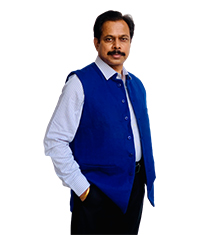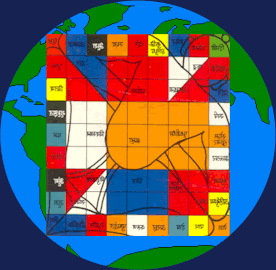|
"Kundalini''
literally means coiling, like a snake. In the classical
literature of hatha yoga kundalini is described as a
coiled serpent at the base of the spine. The image of
coiling, like a spring, conveys the sense of untapped
potential energy. Perhaps more meaningfully kundalini
can be described as a great reservoir of creative energy
at the base of the spine. It's not useful to sit with
our consciousness fixed in our head and think of
kundalini as a foreign force running up and down our
spine. Unfortunately the serpent image may serve to
accentuate this alien nature of the image. It's more
useful to think of kundalini energy as the very
foundation of our consciousness so when kundalini moves
through the sushumna and through our chakras our
consciousness necessarily changes with it.
The
concept of kundalini can also be examined from a
strictly psychological perspective. From this
perspective kundalini can be thought of as a rich source
of psychic or libidinous energy in our unconscious.
In the
classical literature of Kashmir Shaivism kundalini is
described in three different manifestions. The first of
these is as the universal energy or para-kundalini.
The second of these is as the energizing function of the
body-mind complex or prana-kundalini. The third
of these is as consciousness or shakti-kundalini
which simultaneously subsumes and intermediates between
these two. Ultimately these three forms are the same but
understanding these three different forms will help to
understand the differerent manifestations of kundalini.
What
does kundalini have to do with spiritual enlightenment?
What is the goal of kundalini yoga?
First
we need a few concepts: In yogic anatomy the sushumna is
the central channel and conduit for the kundalini energy
that runs along our spine and up to the crown of our
head. Along this channel are placed additional channel
networks called chakras. These chakras are associated
with major aspects of our anatomy - for example our
throat, heart, solar plexus, and in turn these aspects
of our anatomy are related to aspects of our human
nature. According to the literature of kundalini yoga
our experience of these centers is limited due to knots
which restrict the flow of energy into these centers.
Three knots are particuarly important. The knot of Brahma
which restricts the center at the base of the spine. The
knot of Vishnu which restricts the heart center
and the knot of Rudra which restricts the center
between the eyebrows. These knots form an important
framework in yogic thinking and the stages toward
enlightenment are articulated in terms of breaking
through these knots in the yogic classic the Hatha
Yoga Pradipika as well as in some of the yoga
upanishads. Specifically, four stages of progress are
described:
Arambha,
Ghata,
Parichaya and
Nishpatti.
Arambha
is associated with breaking the knot of Brahma
and the awakening of kundalini. Ghata is
associated with breaking the knot of Vishnu and
and with internal absorption. Parichaya the
absorption deepens and in Nishpatti the knot of Rudra
is pierced and the kundalini may ascend to the center at
the crown of the head. In this state transcendence is
integrated and, according to the yogic liteature, the
yogi has nothing more to attain.
Putting
these elaborate physiological decriptions aside, the
goal of kundalini yoga is the same as the goal of any
legimitate spiritual practice: To be liberated from the
limited bounds of the self-centered and alienated ego.
In kundalini yoga this is associated with internal
manifestations of the kundalini but the external
manifestations should be similar to any other
legitiimate spiritual practice.
Rameshwar Prasad
invites you to the Wonderful World of Reiki
|

|
CONTACT
THE CONSULTANT
Engineer Rameshwar Prasad (B.Tech., M.Tech., P.G.D.C.A.,
P.G.D.M.) VAASTU INTERNATIONAL
49 C (Second Floor), Pocket- B, SFS
Flats,
Mayur Vihar,
Phase-III,
New Delhi - 110096,
INDIA
TeleFax : +91-11-22615299 (Landline), Mobile : +91-
9810105218
e-mail : vaastuinternational@yahoo.com
vaastuinternational@gmail.com
|

|



